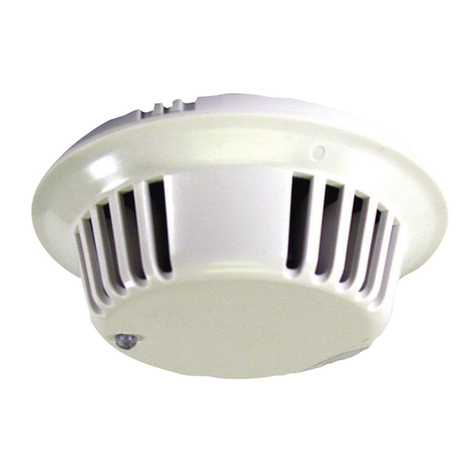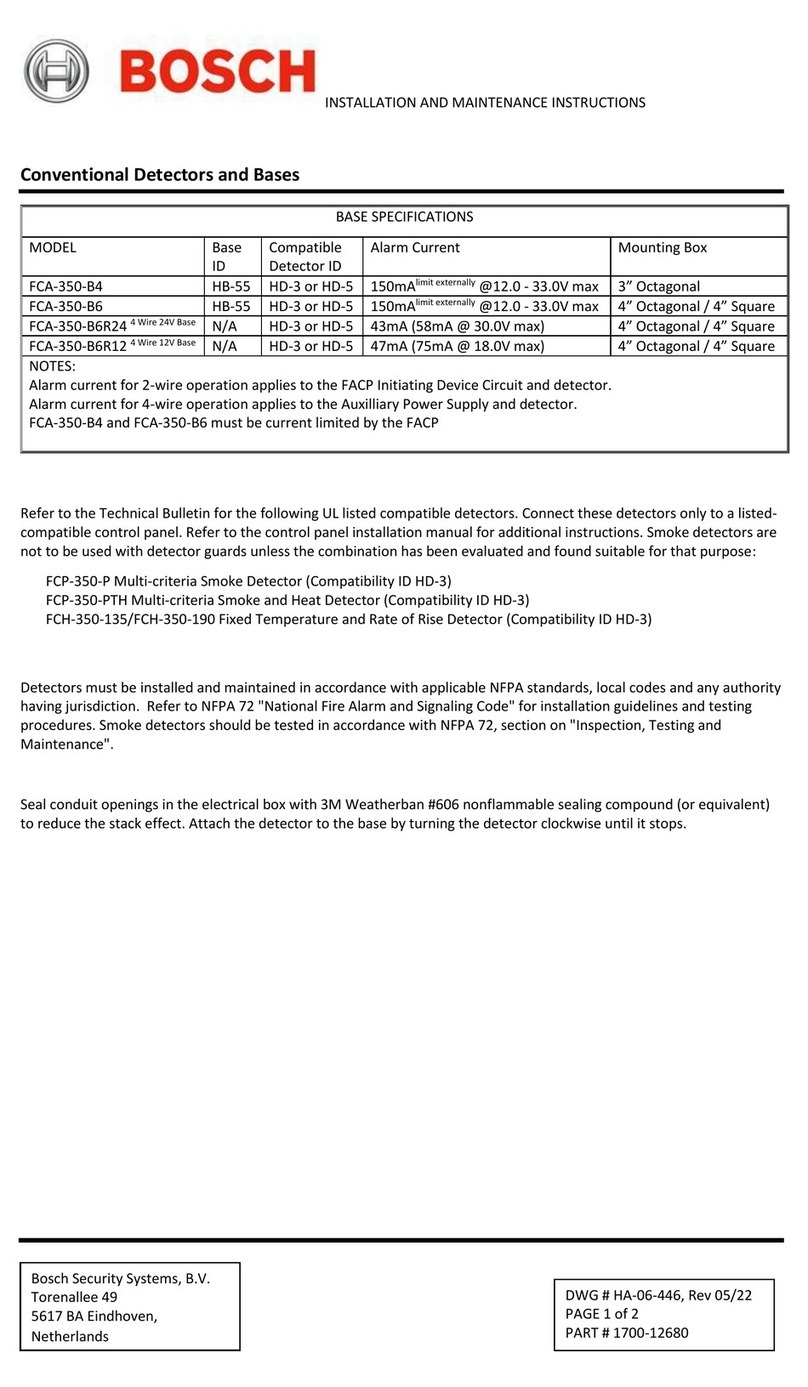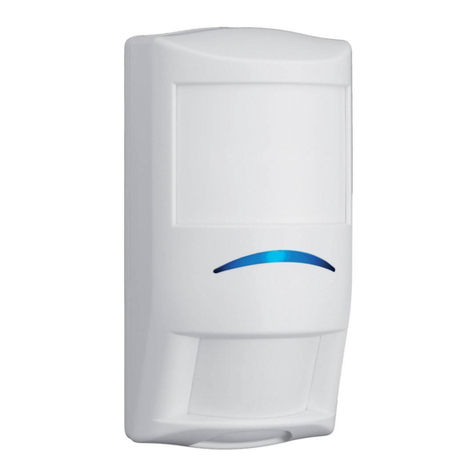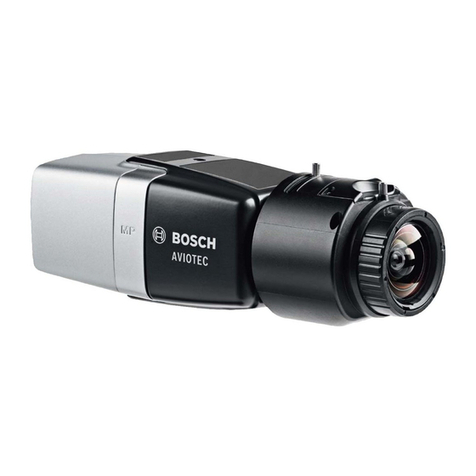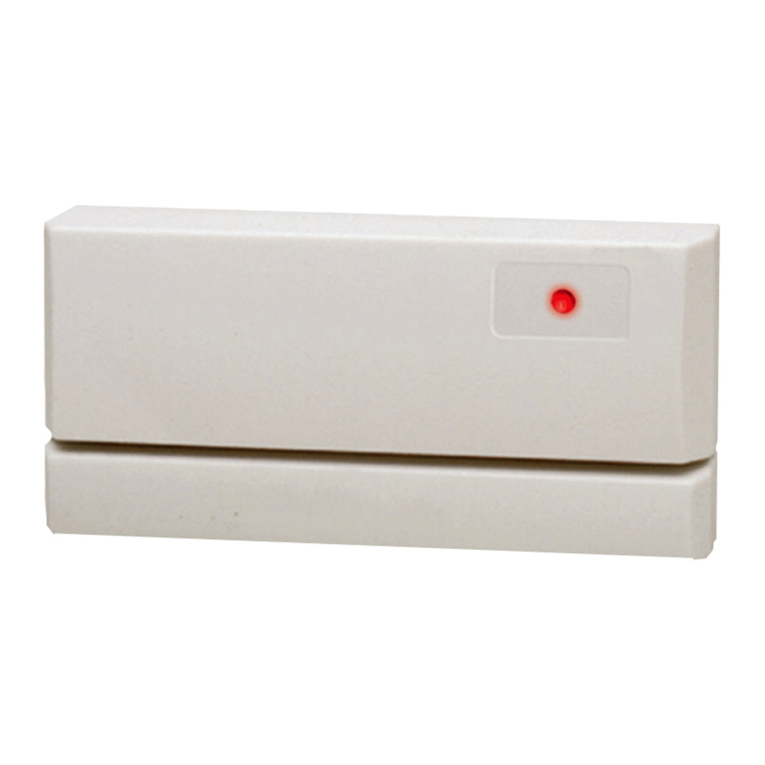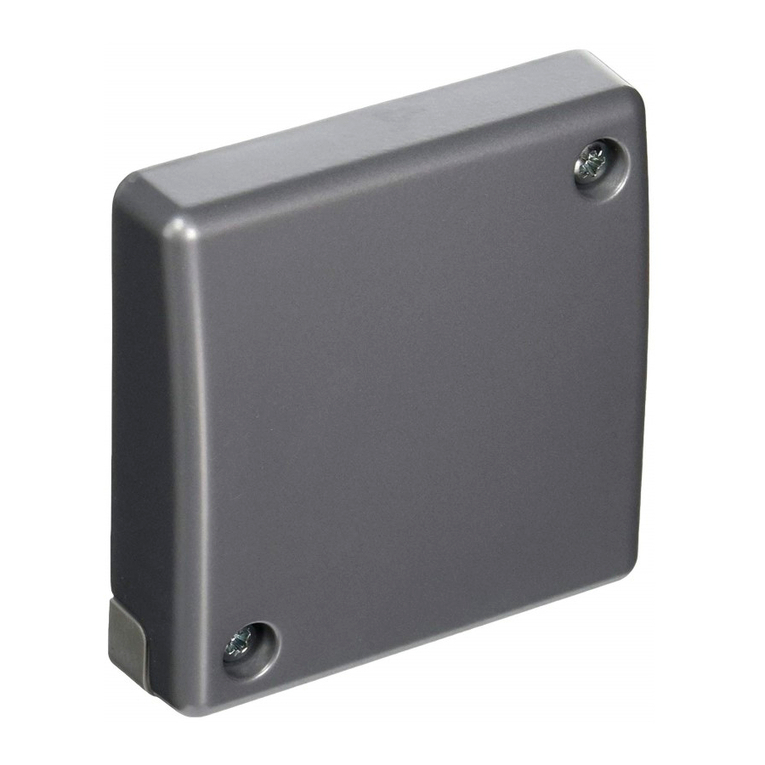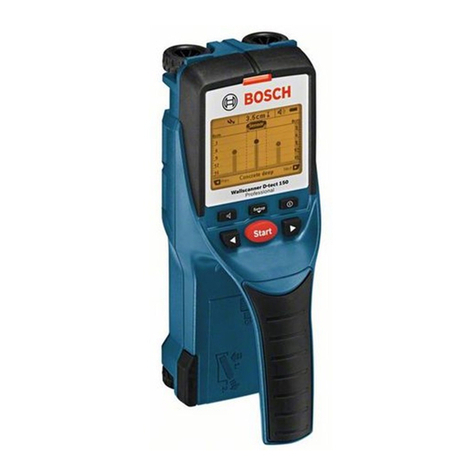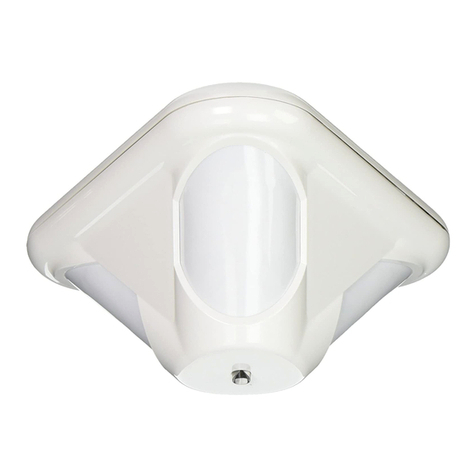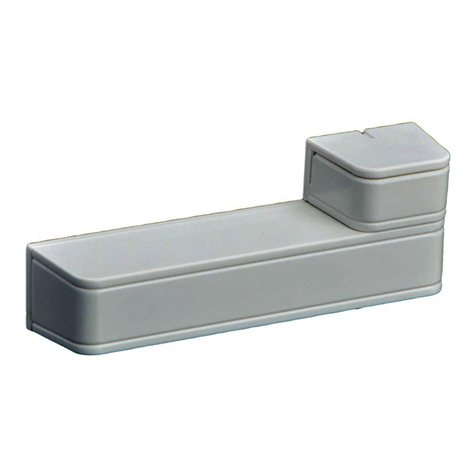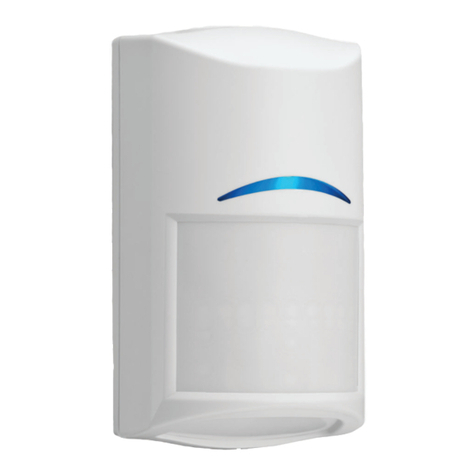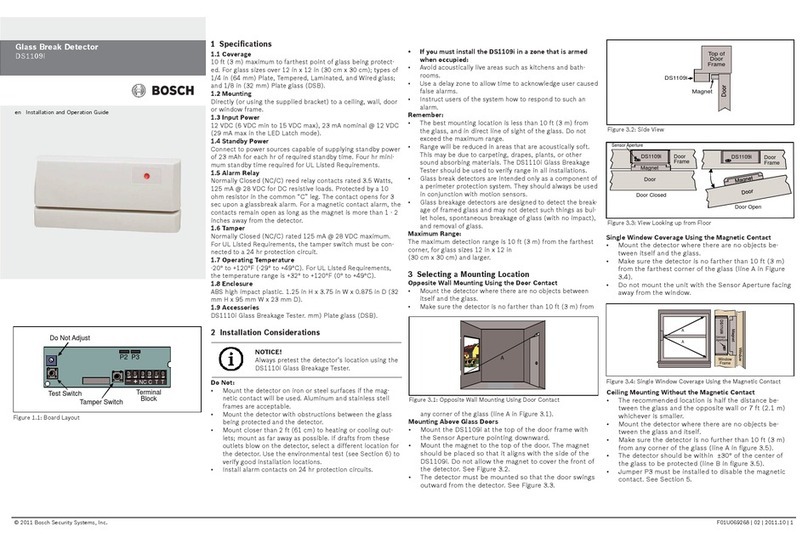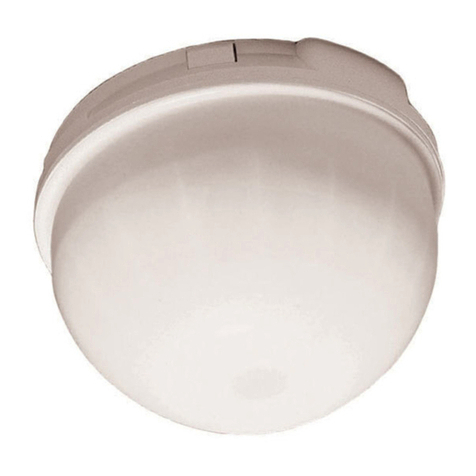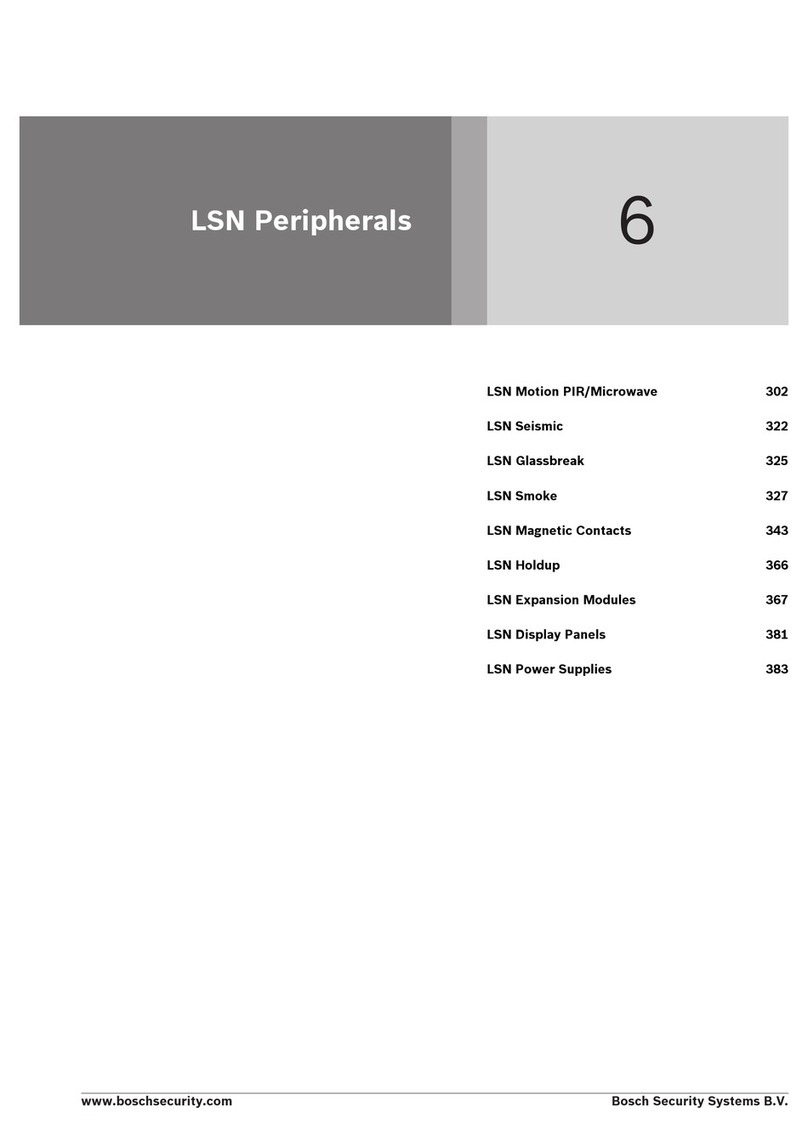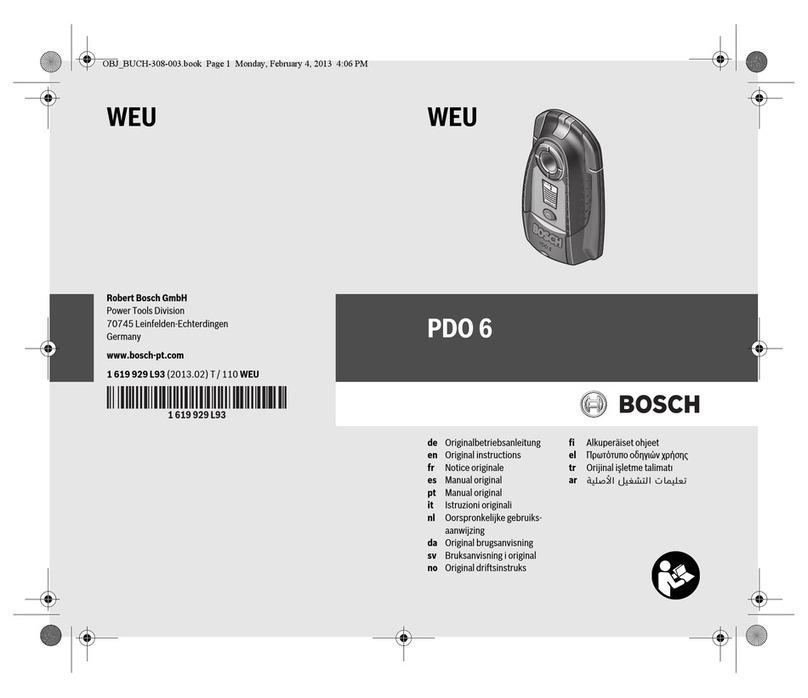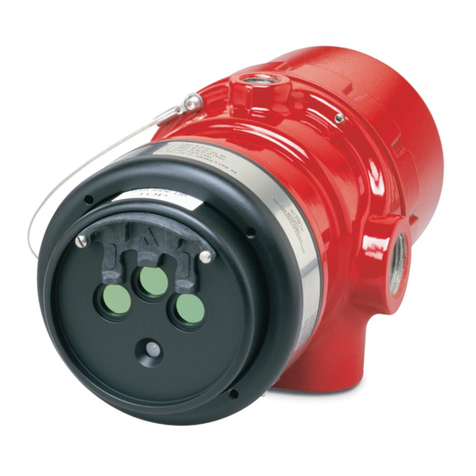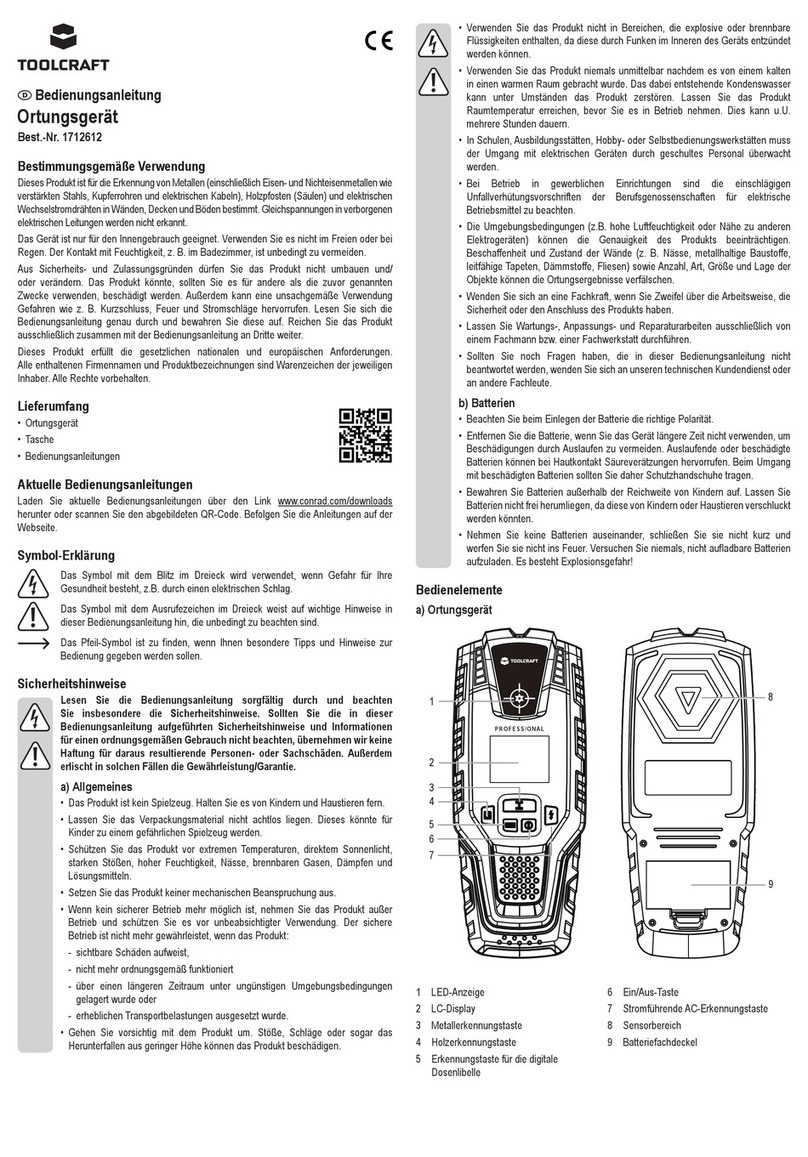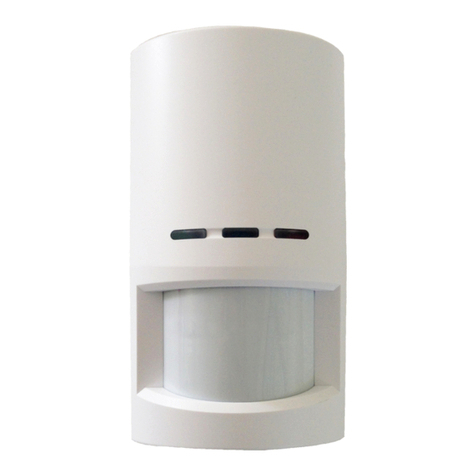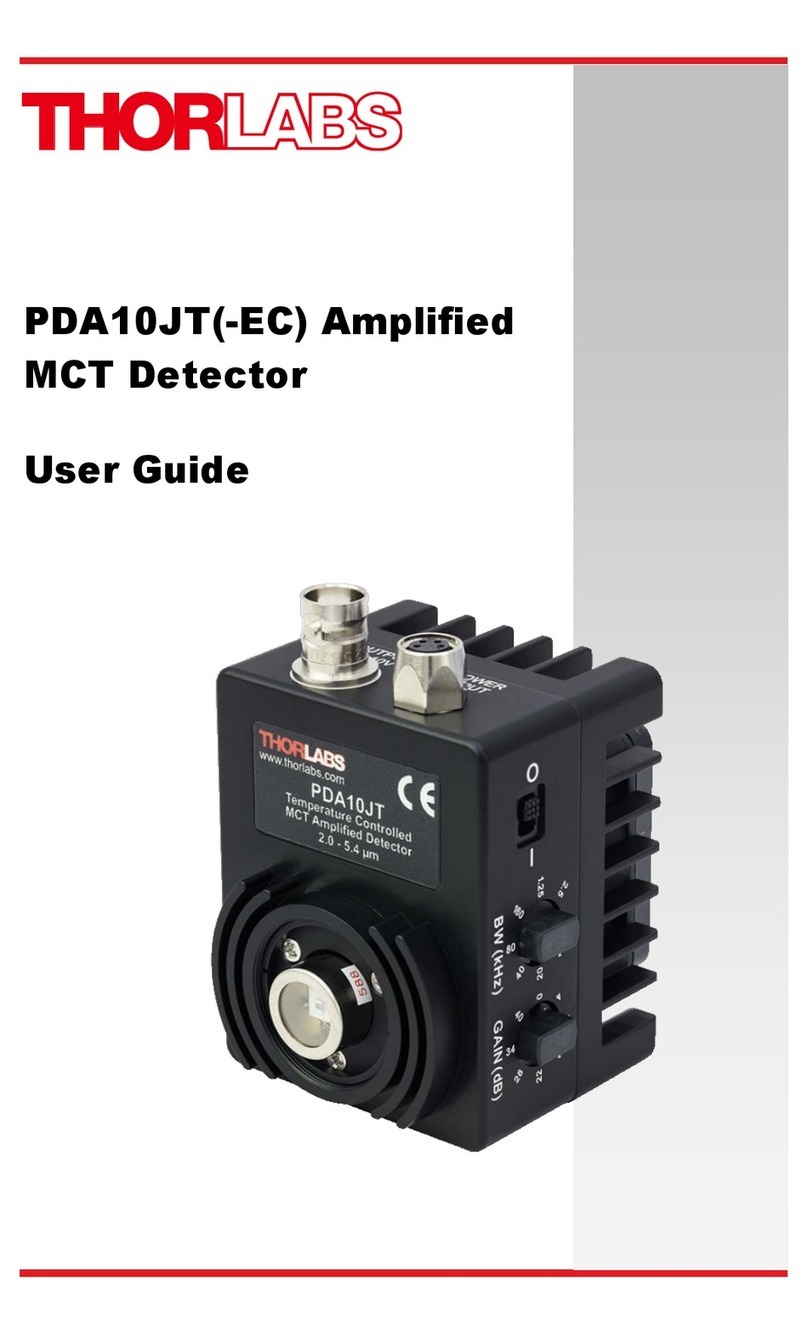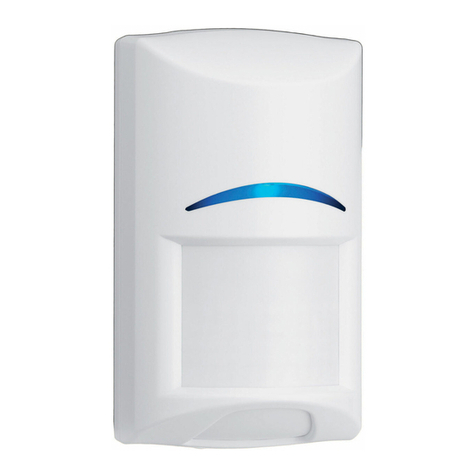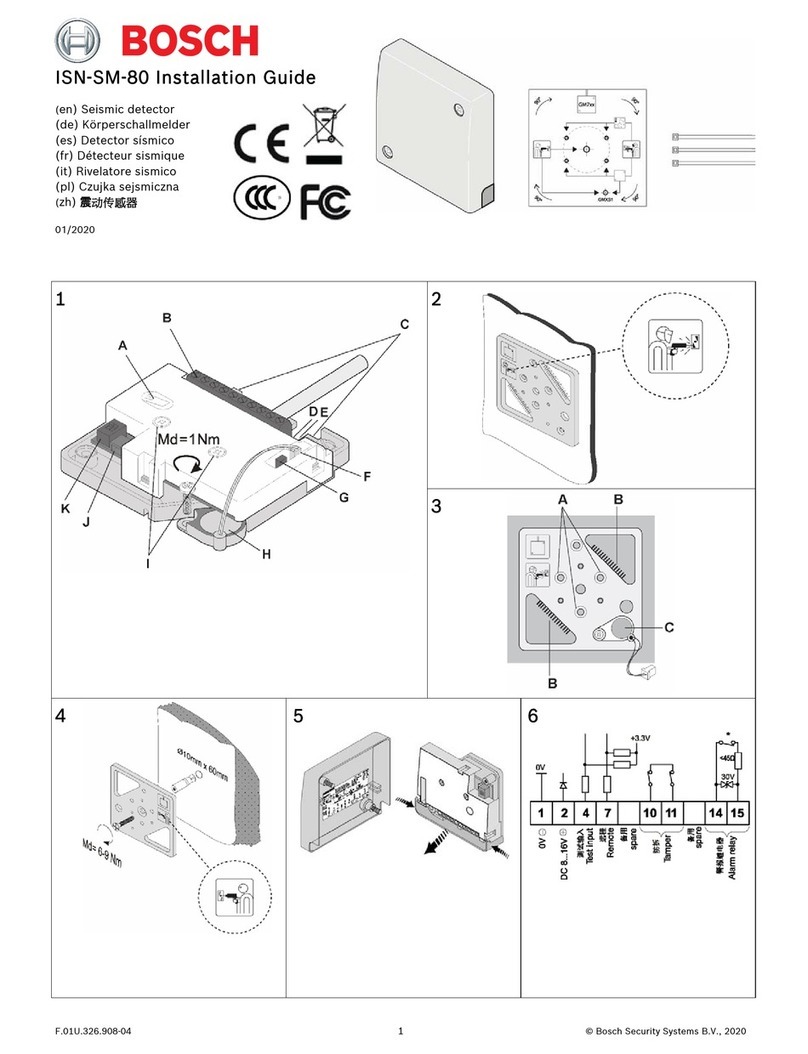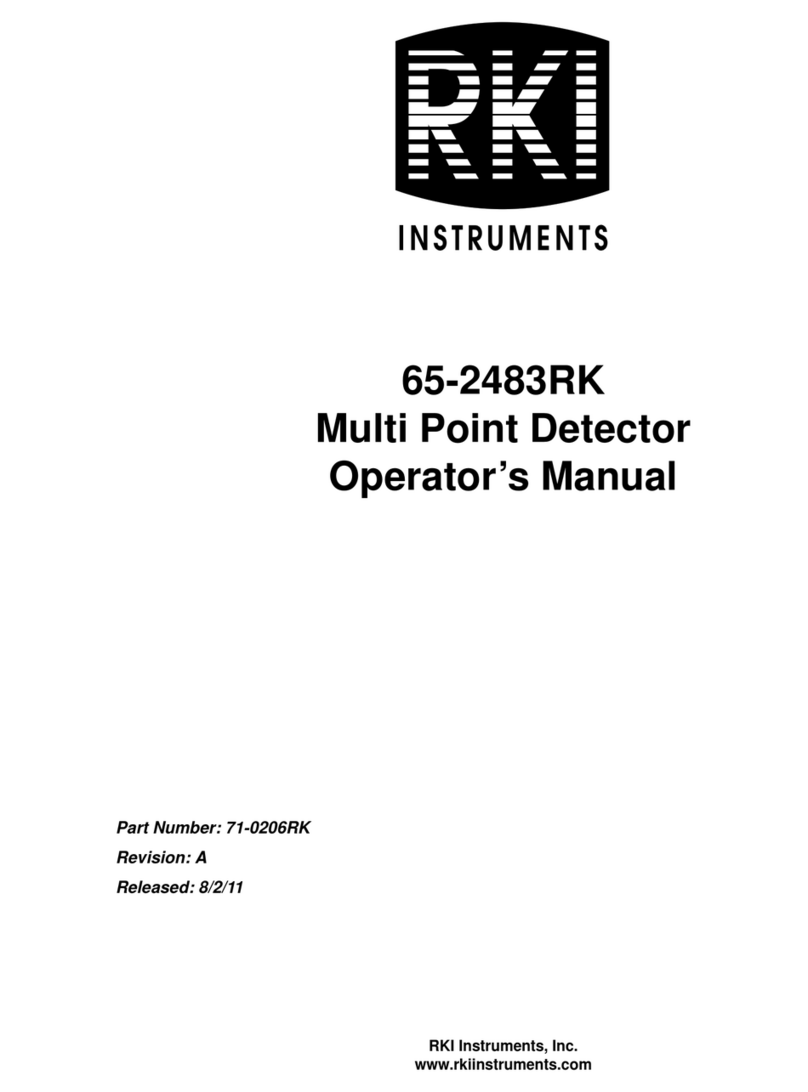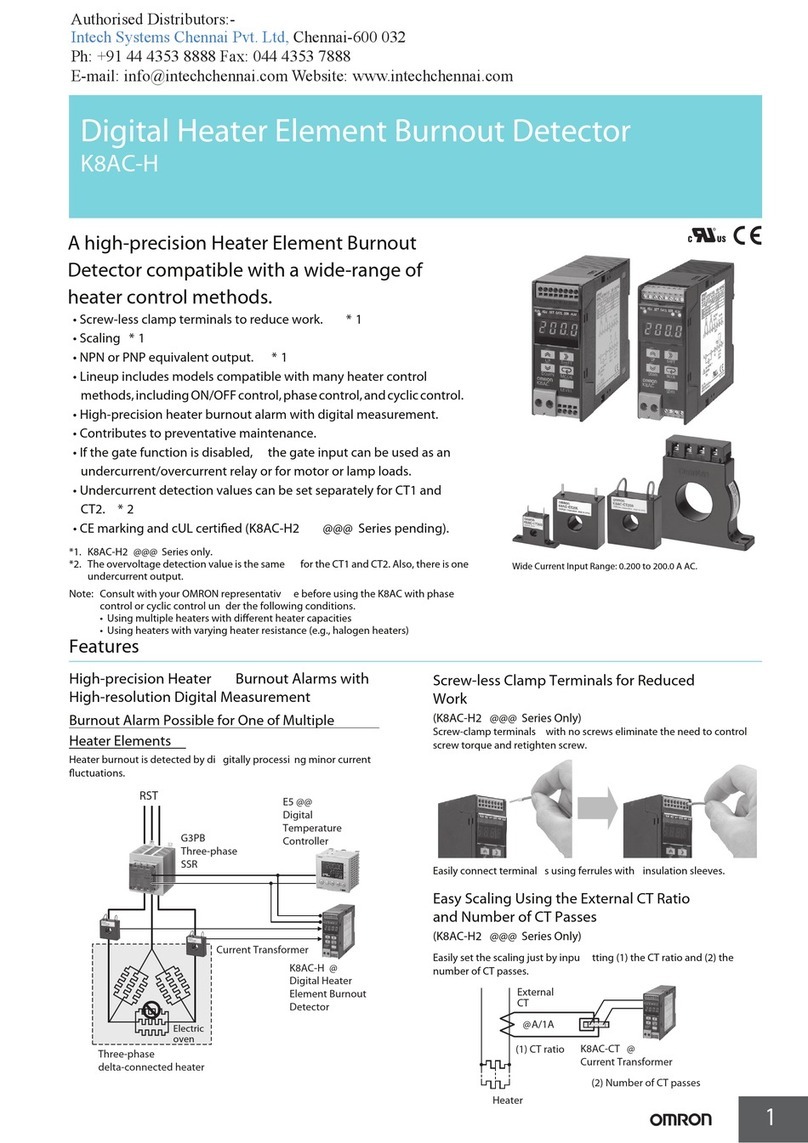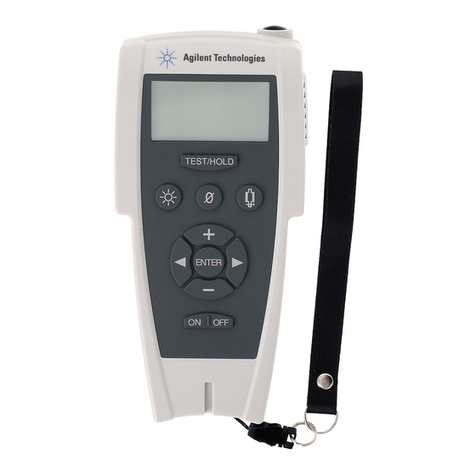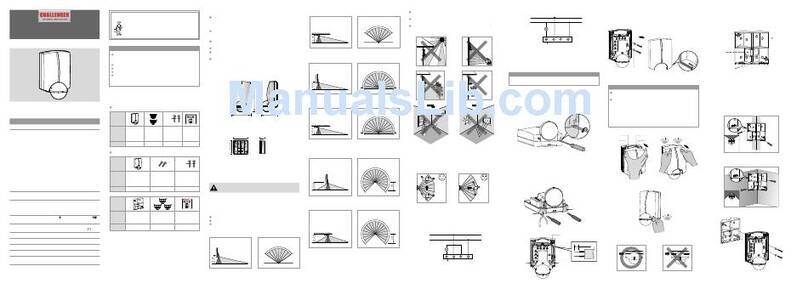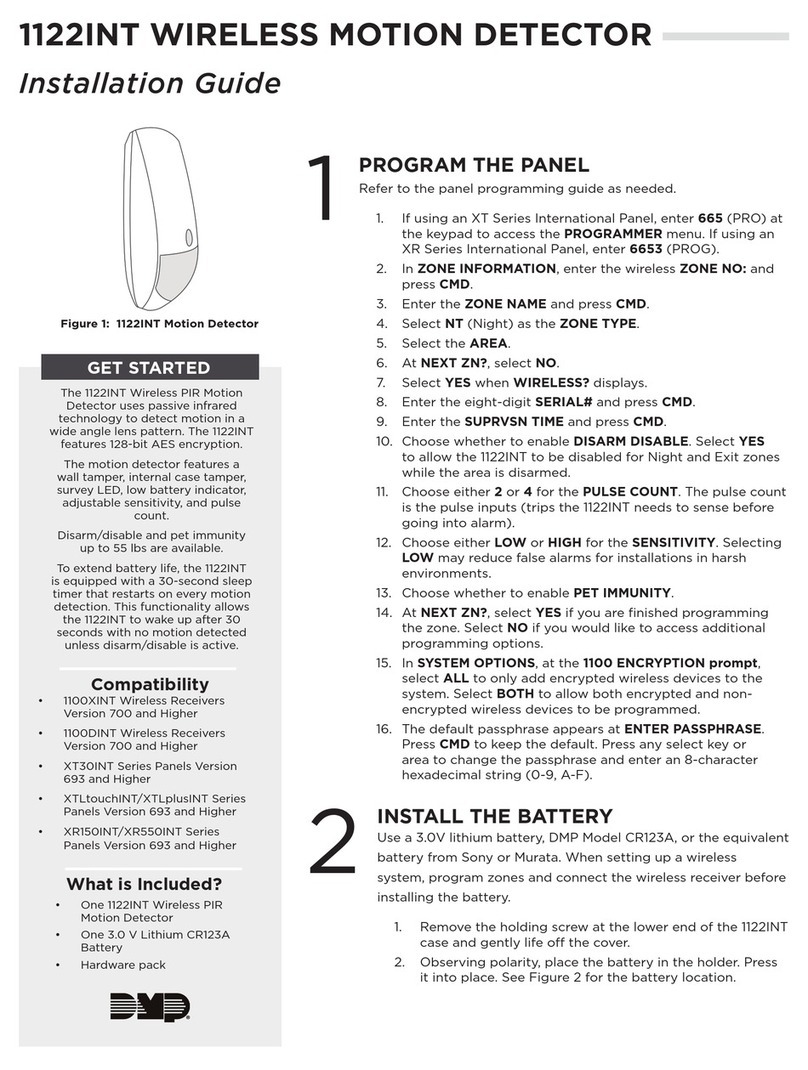1 | Overview 3 | Wire the detector
1. Depending on the dimensions of the hallway, mount the
detector in the center. Adjust the horizontal angle ±10°
by rocking the mirror side to side
(1 click= 1
°
).
Refer to
Figure 2.5 for horizontal angle adjustment.
2. Walk test the installation carefully to ensure adequate
coverage.
Figure 2.5: Horizontal angle (pattern) adjustment (1 click= 1
°
)
Figure 3.1: Contacts shown in normal condition (no alarm or
tamper) with power applied
Figure 4.1: LED ON/OFF switch set to on
Mounting height [m (ft)] Vertical angle setting
30 m (100 ft) 60 m (200 ft)
2 (6.5) -2° -1°
2.3 (7.5) -2° -2°
2.6 (8.5) -3° -2°
4 | Configure the LED
Figure 2.1: Mounting height/range chart
Figure 2.2: Setting vertical angle
2.2 | Vertical mirror adjustment
2.2 | Horizontal mirror adjustment
Use the LED (switch 1) to enable or disable the detector
LED when it is activated by an intruder signal.
LED On/Off Switch 1
LED Enabled
ON
LED Disabled
OFF
Figure 4.2: LED switch settings
Use switches 2 and 3 to set the detectors sensitivity.
High Sensitivity (switch 2 ON) - Provides fast response to
intruder signals when used in quiet environments without
thermal and illumination interference (refer to Figure 5.1).
Intermediate Sensitivity (switch 3 ON) - This is the
recommended setting for any location where an intruder is
expected to cover only a portion of the protected area. This
setting tolerates normal environmental conditions.
Refer to Figure 5.1 to set the sensitivity switches.
5.0 | Configure sensitivity
123
Connect the wires to the terminal block. Seal the wire
entrance with the provided foam plug.
Callout Description
1Power: 6 - 15 VDC, use no smaller than
22 AWG (0.6 mm) wire pair
2Normally Open (NO), Common, Normally Closed
(NC) Reed relay for silent operation: Contacts
rated at 3 watts, 125 mA, 28 VDC maximum for
DC resistive loads and protected by a 4.7 ohm
resistor in the common “C” leg of the relay. Do
not use with capacitive or inductive loads.
3Tamper: Normally Closed Tamper Contacts, rated
28 VDC, 125 mA
2 | Installation considerations
Callout ―Description
1 ―Wiring knockouts for surface or corner mounting
2 ―Corner mounting holes (4)
3 ―Bracket mounting hole
4 ―Surface mounting holes or single gang box holes (2)
5 ―Chassis screw
6 ―Background noise voltage pins
7 ―Tamper switch
8 ―LED
9 ―Configuration switches
10 ―Terminal strip
Select a location for mounting the detector that is most likely
to intercept an intruder moving across the coverage pattern.
The recommended mounting height range is 2 m to 2.6 m
(6.5 ft to 8.5 ft).
Mount to a surface that is solid and vibration-free. Avoid
direct hot and cold drafts, direct sunlight, heat sources,
windows, air conditioning outlets, and small animals. This
detector does not detect through glass.
Refer to Section 9.
NOTICE!
For bracket mounting, refer to the instructions
supplied with the bracket.
1. To remove the cover, insert a thin slotted screwdriver
into the notch at the bottom of the cover and pry up.
2. Remove the chassis screw in the upper right corner of
the assembly. To remove the circuit board/mirror unit
from the enclosure, push the circuit board/mirror unit
toward the top of the enclosure until it clears its four
retainer tabs, then lift out.
3. Mark the location for the mounting screws. Use the
enclosure as a template. Start the mounting screws.
4. Open the appropriate wiring knockout and route the
wiring through (Refer to Section 3.0).
5. Securely attach the detector.
6. Replace the circuit board/mirror unit.
7. Adjust the mirror.
2.1 | Mounting
NOTICE!
Excessive handling of the mirror surfaces lead to
performance degradation.
NOTICE!
Only apply power after all connections have been
made and inspected.
1. Adjust vertically from +2° to -18° by sliding the mirror
forward or back. Refer to Figure 2.1 to set the correct
vertical angle based on the mounting height and desired
range. Angle adjustment marks are on the sides of the
mirror (refer to Figure 2.2).
2. Slide the mirror forward or back until the angle hash
marks are in-line with the markers on each side of the
frame.
For narrow hallways, adjust the mirror horizontally to
enable proper coverage. By default, the detector pattern is
centered, leaving a gap in the coverage pattern down most of
the hallway (refer to Figure 2.3). Adjust the detector pattern
(mirror) to remove this coverage gap (refer to Figure 2.4).
Mount the detector and adjust the mirrors to provide proper
coverage.
Adjust the mirror vertically to enable proper coverage.
Figure 1.1: Detector base interior view (top) and detector body
interior view (bottom)
The DS778 is a long range, passive infrared intrusion detector
with pointable mirrored optics.
5
6
7
10
8
9
Figure 2.3: Narrow hallway, detector centered, pattern
centered
Figure 2.4: Narrow hallway, detector centered, pattern
rotated 1
°
(1 click)
